



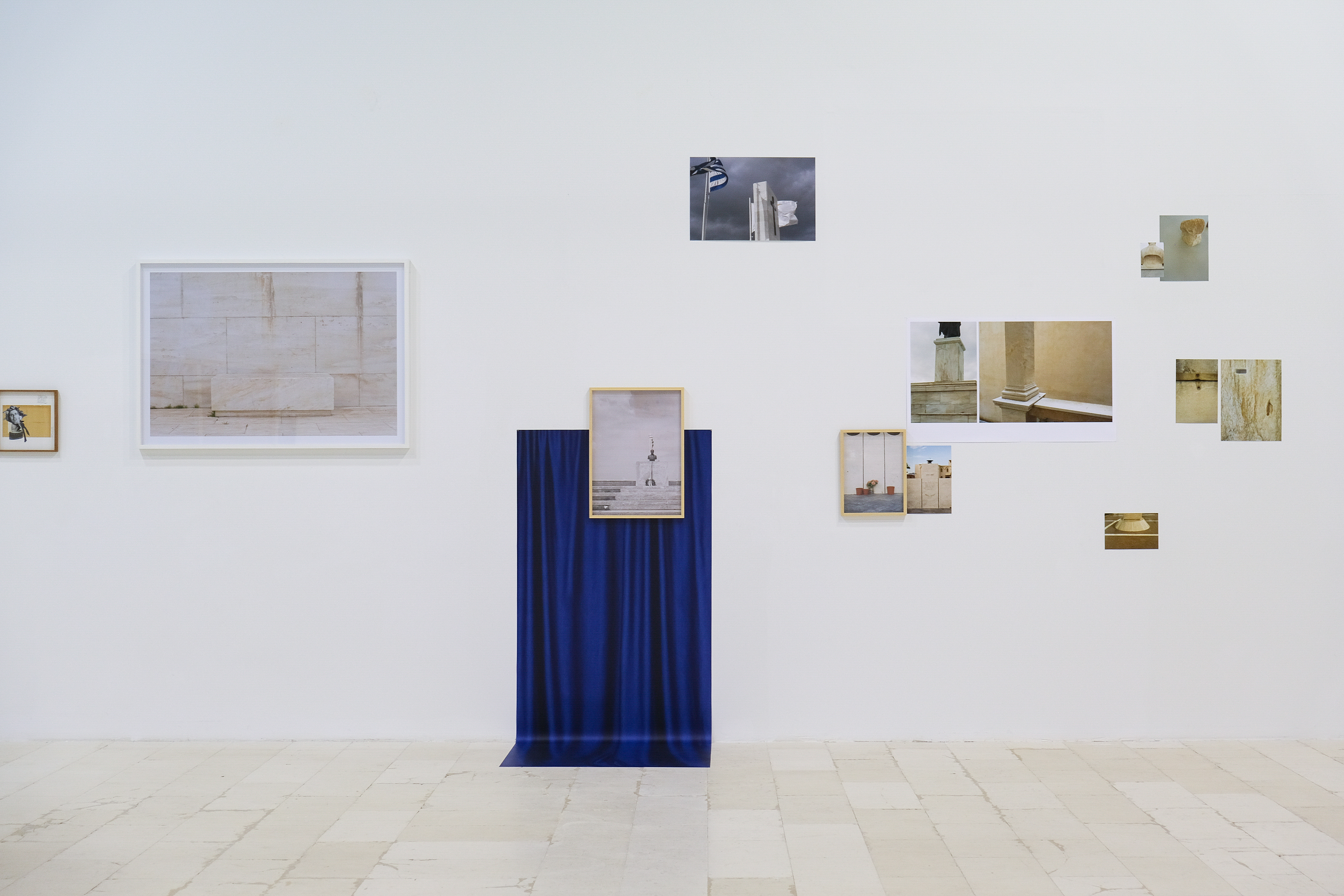





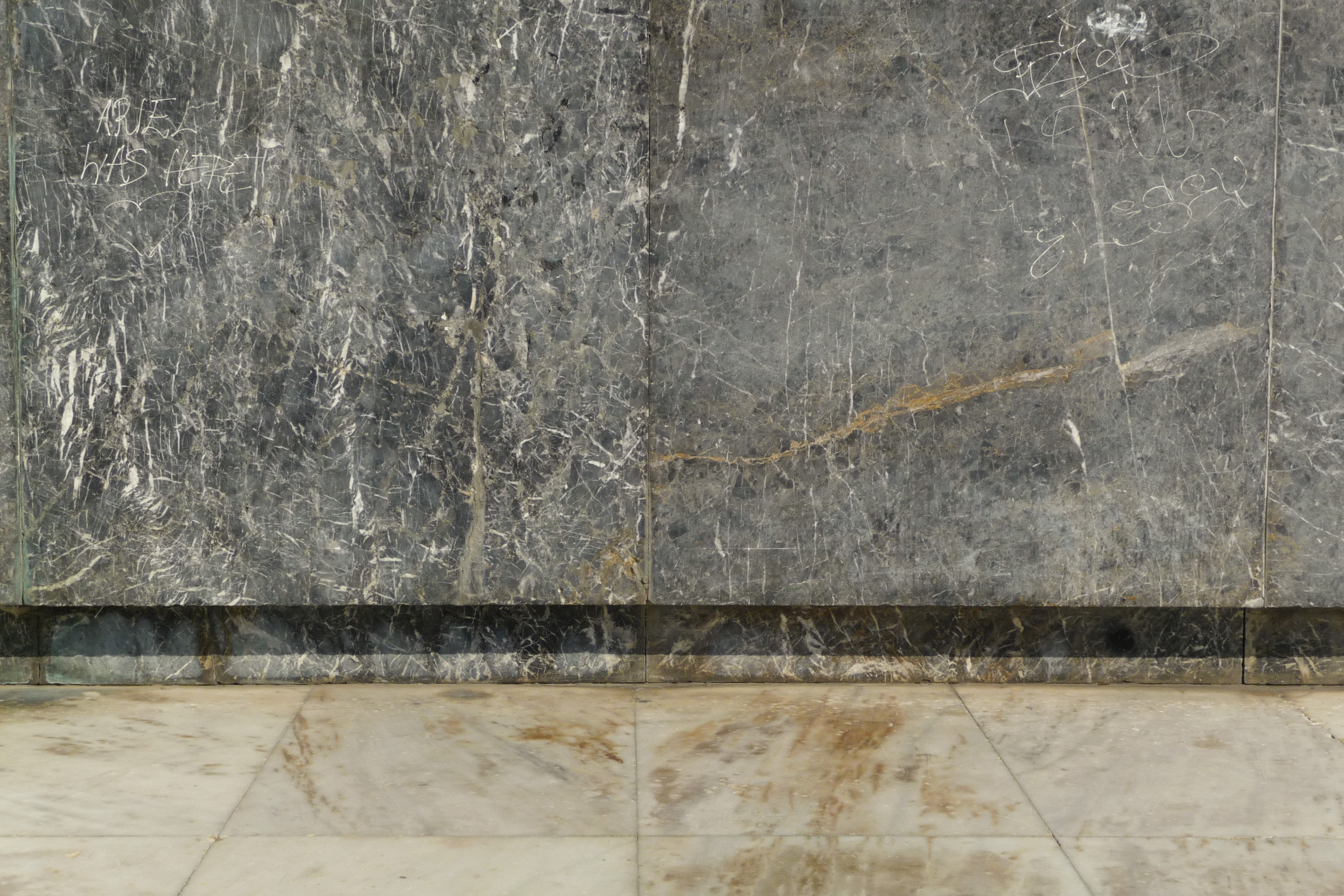

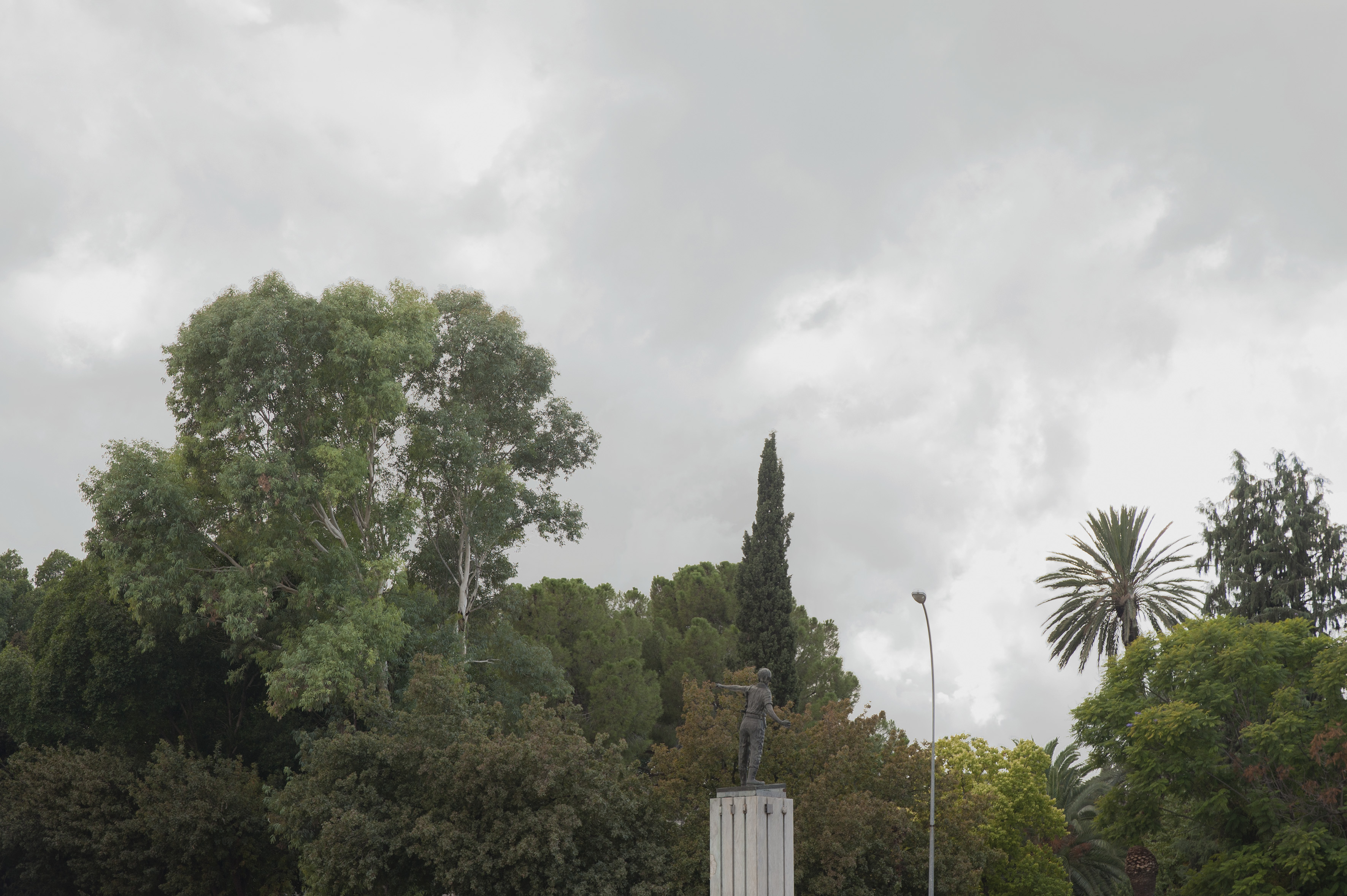
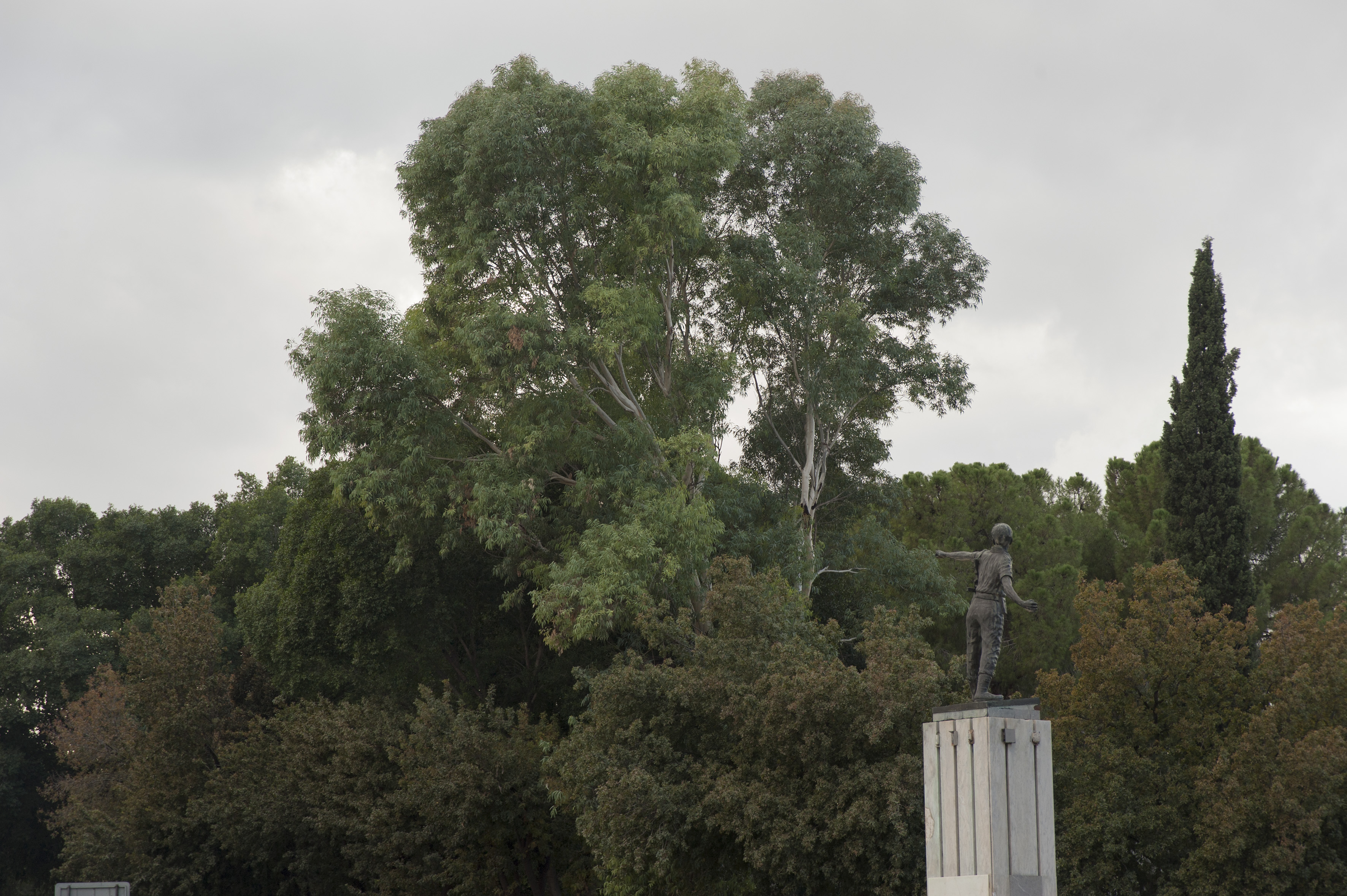
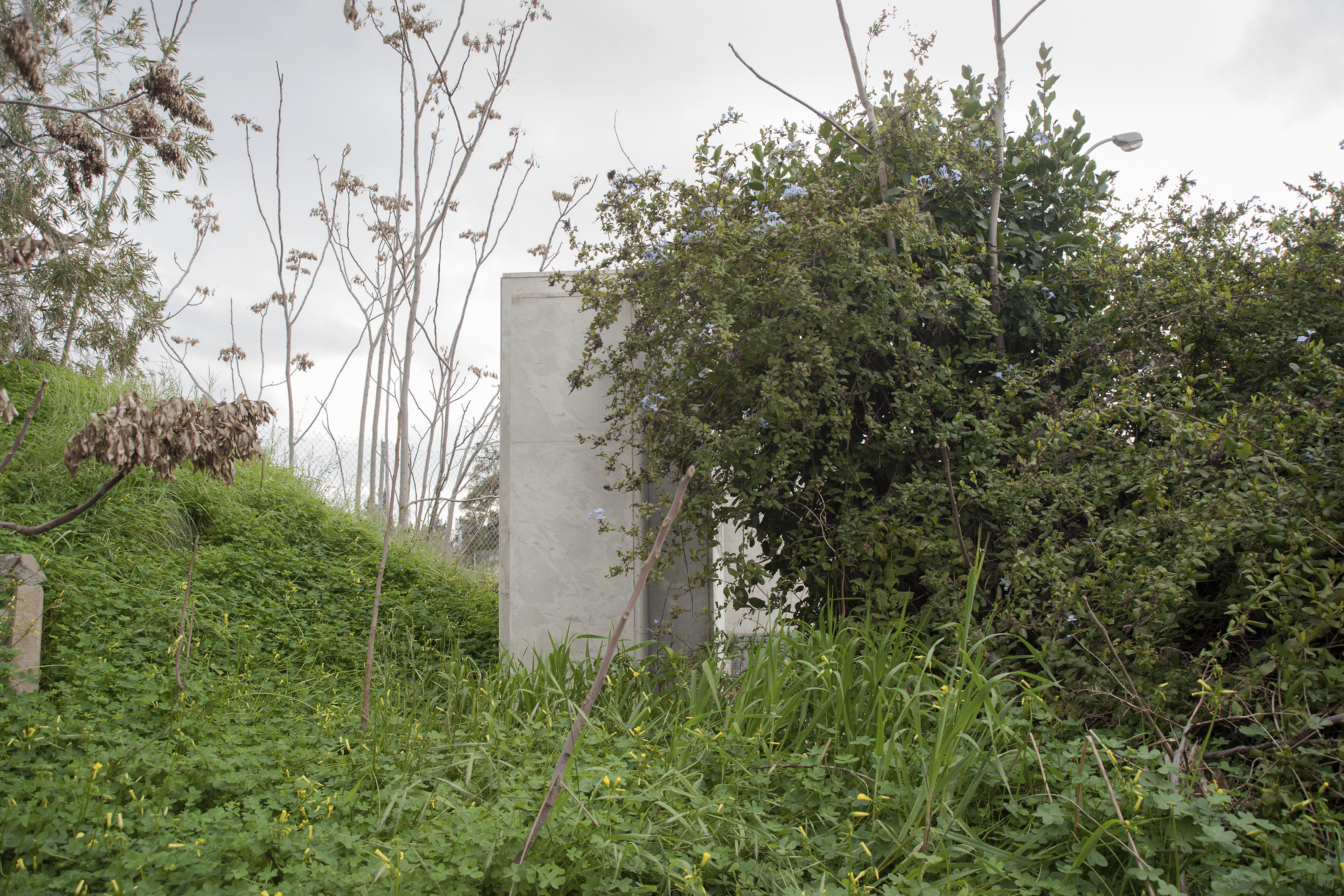


















Propaedeutics on Memorial Structures Vol. I, 2019
archival pigment prints, digital print on vinyl, collage on paper
dimensions variable
archival pigment prints, digital print on vinyl, collage on paper
dimensions variable
Propaedeutics
on Memorial Structures Vol. I, is part of a three-volume project
investigating the social, political and cultural condition of memorials and monuments
in Cyprus. In studying, deconstructing and re-presenting a number of memorials
in the southern part of the island—the project deliberately focuses on Greek-Cypriot
memorials as opposed to a comparative study between Greek- and Turkish-Cypriot
ones— the work examines these sculptural objects introduced into the Cypriot landscape
and attempts to challenge their significations. Hyperreal depictions of heroes
in explicit military poses, bronze bodies and hands pointing upwards in despair
(or in glorious resistance and determination), visual reconstructions of
sacrifice, trauma and honor, appear oddly in tune with their surrounding
elements. While these structures appear to eternalize “realistic” visual
narratives, it is their function of constructing specific symbolic depictions withinand for this landscape that is challenging here: a selective
process, a sort of “subjective landscape,” as per W.J.T. Mitchell’s[1]proposal that we approach landscape as a process “onto which social and
subjective identities are projected,” rather than only an object to be seen or
a text to be read.
Cypriot memorial monuments are typically figurative, predominantly depicting heroes and martyrs of the nation’s recent history of conflict, placed on pedestals or often manifest as architectural complexes that mediate between the physical site they dominate and the symbolic capital they embody. Intended as permanent fixtures in distinctive spatial and social landscapes, thus usually made of enduring materials like marble, granite or bronze, these monuments are meant to perform a specific didactic function.[2]Immortalized through their own materiality, instantly transformed into authoritative public symbols, these constructed “material sites of memory” operate as physical and semantic objects within the Cypriot sociopolitical fabric, and become part of asserted national and historical narratives. And while vernacular flora interventions over time could pronounce their fading power, physical modifications and annual national performative commemorations indicate the alarmingly persistent validity of their symbolic accretions.
Cypriot memorial monuments are typically figurative, predominantly depicting heroes and martyrs of the nation’s recent history of conflict, placed on pedestals or often manifest as architectural complexes that mediate between the physical site they dominate and the symbolic capital they embody. Intended as permanent fixtures in distinctive spatial and social landscapes, thus usually made of enduring materials like marble, granite or bronze, these monuments are meant to perform a specific didactic function.[2]Immortalized through their own materiality, instantly transformed into authoritative public symbols, these constructed “material sites of memory” operate as physical and semantic objects within the Cypriot sociopolitical fabric, and become part of asserted national and historical narratives. And while vernacular flora interventions over time could pronounce their fading power, physical modifications and annual national performative commemorations indicate the alarmingly persistent validity of their symbolic accretions.
As Doss suggests, monuments function as “archives of
public affect, as repositories of feelings and emotions that are embodied in
their material form and narrative content.”[3]As such, the sculptural representations of Cypriot memorial monuments reflect
almost exclusively the predominant values of a shared collective memory
and a national identity, one “that personifies the history of Cyprus
to the petrified images of its dead fighters-heroes.”[4]The material structures that physically persist have superseded any
personalized mourning of a hero or an event; instead they have turned into
dominant sacred national signifiers pointing to selective historical
narratives. In reflecting selective modes of historical representation, these
structures play an important part in the processes and politics of remembering.
[1] Mitchell, W.J.T. Landscape and Power. The University of Chicago Press, 2002.
[2] Janson, H.W. The Rise and Fall of the Public Monument. The Graduate School, Tulane University, 1976, p. 1; Krauss, Rosalind E. The Originality of the Avant-Garde and Other Modernist Myths. MIT Press, 1985, pp. 279-290.
[3] Doss, E. Memorial Mania: Public Feeling in America. The University of Chicago Press, 2010.
[4] Karaiskou, V. “Commemorative sculpture and ceremonial behaviors in the public sphere: Cyprus as a case study.” Sociological Study, vol. 3, no. 12, 2013, pp. 920-932.
[1] Mitchell, W.J.T. Landscape and Power. The University of Chicago Press, 2002.
[2] Janson, H.W. The Rise and Fall of the Public Monument. The Graduate School, Tulane University, 1976, p. 1; Krauss, Rosalind E. The Originality of the Avant-Garde and Other Modernist Myths. MIT Press, 1985, pp. 279-290.
[3] Doss, E. Memorial Mania: Public Feeling in America. The University of Chicago Press, 2010.
[4] Karaiskou, V. “Commemorative sculpture and ceremonial behaviors in the public sphere: Cyprus as a case study.” Sociological Study, vol. 3, no. 12, 2013, pp. 920-932.